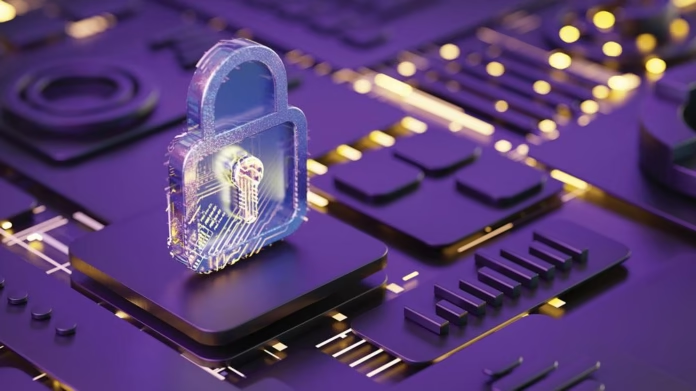Cybersecurity is no longer just an IT department’s concern — it’s now central to business survival. In 2025, digital threats aren’t a possibility; they’re a guarantee. Whether you’re running a startup, a hospital, or an e-commerce platform, you’re a target.
Why? Because cybercriminals don’t discriminate — they exploit opportunity. And in our hyper-connected world, there are more doors open than ever before.
This is where businesses need to pause and rethink how seriously they’re protecting their digital environment. Arrow PC Network, a recognized leader in IT services, helps organizations fortify their defenses through real-time cybersecurity solutions built for modern-day risks. But even before you bring in the experts, here are ten essentials every business must practice — no shortcuts, no excuses.
1. Build a Multi-Layered Defense
No single tool can protect your entire system. Cyberattacks are too varied and too smart. That’s why you need multiple layers: firewalls, email filters, endpoint protection, identity management — all working in sync.
Think of it like securing your house. You wouldn’t just lock the front door. You’d check the windows, install motion sensors, maybe even a camera at the gate. The same logic applies to your business data.
2. Patch Early, Patch Often
Many breaches happen simply because updates were ignored. Software vendors regularly release security patches for a reason — to close holes hackers love to exploit.
Waiting weeks or months to install these updates gives attackers a huge advantage. Make patching part of your regular operations, not a once-in-a-while activity. And automate wherever possible.
3. Be Wary of Third-Party Access
A surprising number of breaches stem from vendors and external software. If a supplier or app connects to your system, you’re vulnerable if they get compromised.
Review your third-party tools regularly. Limit access, demand transparency, and have exit plans ready if something feels off. Supply chain security is now a frontline issue — treat it that way.
4. Backups Are Not Optional and Must Be Ransomware-Proof
Backing up your data is a no-brainer. But it’s only useful if your backups can’t be encrypted or deleted by malware.
Use offline or immutable backups — copies that can’t be tampered with, even if attackers breach your system. Store them separately and test recovery often. A backup is only as good as its reliability when everything else fails.
5. People Can Be the Weakest Link or Your Strongest Shield
Hackers aren’t just exploiting code — they’re exploiting people. Phishing scams, fake invoices, social engineering — it only takes one person clicking the wrong link.
That’s why cybersecurity training isn’t optional anymore. It’s your first line of defense. Teach employees to question everything. Regularly simulate phishing attempts and share real-life attack examples to keep awareness high.
6. Enable Multi-Factor Authentication Everywhere It Counts
Passwords can be guessed, cracked, or stolen. Adding a second verification step — like a phone code or fingerprint — makes it exponentially harder for someone to hijack an account.
If you’re only using passwords for sensitive systems or admin access, you’re gambling with your data. MFA (multi-factor authentication) is one of the simplest upgrades with the biggest payoff.
7. Run Mock Breaches and Cyber Drills
You don’t want your first ransomware experience to be the real thing.
Run practice scenarios. Test how your team responds to simulated attacks — not just IT, but finance, HR, and leadership. These drills expose hidden weaknesses and show you what needs fixing before it’s too late.
Just like fire drills, cyber drills save businesses from catastrophe.
8. Test Your Defenses with Penetration Testing
Wouldn’t you rather find the holes in your system before someone else does?
Penetration testing is basically hiring ethical hackers to do what the bad guys would — probe for weaknesses. It’s a crucial tool for catching blind spots. With firms like Arrow PC Network offering thorough reports and real fixes, it’s not just a tech exercise — it’s risk management.
9. Don’t Forget Physical Security
It’s not all ones and zeroes. Sometimes the breach starts with a stolen laptop, a USB left in a parking lot, or someone tailgating into your server room.
Encrypt portable devices. Restrict access to critical hardware. Train your staff to report suspicious behavior. Good cybersecurity often starts with simple physical habits.
10. Make Security a Habit, Not a Headache
The most secure companies aren’t the ones with the most expensive tools — they’re the ones where cybersecurity is baked into the company culture.
That means everyone, from top execs to interns, understands the risks and takes ownership of their role in protection. Recognize good security behavior. Make policies clear, simple, and enforced. And above all, lead by example.
Cybersecurity isn’t a one-time project — it’s a mindset.
Final Thoughts
Cyber threats aren’t going anywhere. If anything, they’re evolving faster than most businesses can keep up.
But there’s good news — you’re not in this fight alone. Partnering with experienced professionals like Arrow PC Network gives you access to cutting-edge cybersecurity services and support that’s built around your unique needs.
Whether you’re facing ransomware threats, insider risks, or compliance pressures, the best time to act is now. Because in 2025, cybersecurity isn’t a choice — it’s a necessity.


